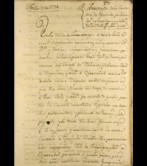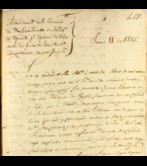Social tensions
The limits of agricultural expansion
Agricultural expansion was limited by the landscape itself. The area of land under cultivation had been increased by ploughing up poor land, such as coastal terrain, swamps and slopes to the point where the profit no longer justified the investment. By the end of the 18th century, after more than a century of building new caseríos and population growth, the model had reached its limits, slowing or even preventing the establishment of new families because there was no new land to exploit.
Change in type of ownership
Much of the new cultivation was on land that was previously communally owned, which was essential for the survival of many people. This land was privatized by families who were already wealthy and who began to invest more in caseríos. They built new caseríos, not for themselves but to rent. As more families were forced to rent and fewer caseríos were used by their owners, and, furthermore, as a minority accumulated various properties - in some cases many properties – it allowed the owners to impose tough conditions on the tenants in an atmosphere of increasing social tension. This situation continued until the 19th century and the beginnings of industrialisation.
Social tensions
A change in the customs regime, which called into question the right to import without paying tariffs, led to increasing social tension which broke out in machinadas, widespread popular uprisings.
The first was in 1718. In 1739 there was a mutiny of poor farmers in Azpeitia; in 1755 there was another in Alto Deba linked to trade and meat supply, and in 1776, the one known as the second machinada. On this occasion it was caused by speculation in the price of wheat and spread rapidly. They were not simply outpourings of anger, but an attempt to “reestablish traditional order” in the face of attempts to impose an economic model based on the free market rather than social need. They established a “fair” price for bread and drew up local ordinances. The machinadas coincided with similar uprisings across Europe. Faced with popular uprisings, the rural aristocracy found their greatest allies in the Donostia urban bourgeoisie who backed the new social and economic order.




